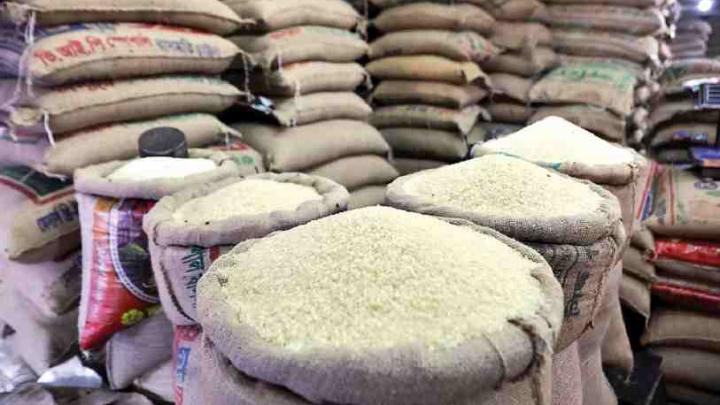Price hiked by Tk 5 though cost increased by Tk 0.70
Shining BD Desk || Shining BD
The rice market has been unstable over the past few weeks despite no crisis in the supply chain. The food grain's price soared by Tk 4 to 5 per kg at the two major wholesale markets in Naogaon and Kushtia after the government hiked the prices of fuel oil to an unprecedented extent on 5 August.
The millers blamed the high prices of paddy and fuel oil for the jump in rice price. However, the insiders said that the price has been hiked much higher than the spike in costs.
At the same time, some millers blamed the ‘rice syndicate’ for the irrational rise in price. They said the influential millers are hiking the price at their will to bag extra profit in absence of proper monitoring from the government. They resorted to high fuel prices to legitimise the irrational price hike.
There was no crisis of rice and paddy in Naogaon during Boro season this year and the supply system was also normal. But the rice market was unstable throughout the entire season.
Each kilogram of miniket rice, which was at Tk 55-56 at the beginning of the season, is now selling at Tk 65. The wholesale price of rice decreased by Tk 1 to Tk 2 this week, but the retail price still remains unchanged.
The millers of Khajanagar in Kushtia, the second largest rice hub, said they are counting an additional fare of Tk 0.40 per kilogram while bringing paddy from the northern and southern blocks of the country.
Besides, an additional amount of Tk 0.30 per kg added to the costs while transporting rice to Dhaka from the mills. Simply put, the total increment in cost stood at Tk 0.70 per kg.
But the price of rice jumped by Tk 5 at all wholesale markets in Kushtia. Lastly, the traders hiked the price by Tk 1 per kg on Thursday.
The miniket variety of rice, which was at Tk 68 per kg a week ago, was selling at Tk 69 per kg at the mill-gate area in Khajanagar on Thursday. The Atash variety was selling at Tk 53 per kg on the day, though it was at Tk 52 in the previous week.
The government hiked prices of fuel oil on 5 August night. On the previous day, the price of miniket variety was Tk 64 per kg, Kajal Lata Tk 56 per kg and Atash Tk 48 per kg. The prices soared by Tk 5 in the next 17 days.
The mill owners claimed that the paddy market was unstable over the Boro season as there has been no quality paddy this time due to inundation during harvesting. A maund of paddy normally produces 25 to 26 kg of rice, but the amount decreased to 22 to 23 kg this time.
Sheikh Farid Uddin, proprietor of Fariha auto rice mill in Sultanpur of Naogaon, said, “If anyone destabilises the market illegally hoarding paddy and rice, the government should take action against them. We are selling (rice) adjusting the price with the production cost.”
Farhad Hossain Chakdar, general secretary of Naogaon district rice mill owners group, said they proposed the government to import rice when the haor areas suffered the first phase of flood in the Bangla month of Jaistha.
But the government had turned a deaf ear to the proposal. Later, it made a decision to import rice on 1 July, but the food grain could not be imported due to the high dollar price. The crisis would not have been created had the government decided to import timely, he added.
According to the department of agricultural extension in Naogaon, the rice production target of the district was set at 812,000 metric tons for the ongoing Boro season. But the farmers produced 725,000 metric tons of rice in the season, down by 100,000 metric ton from the target.
Meanwhile, owners of four small rice mills in Khajanagar of Kushtia said the transportation cost of paddy and rice increased by only Tk 0.70 per kg, but the price jumped by Tk 5. There is no one to look into why the price has increased so much.
There are dozens of rice mills in Khajanagar area and some 10 influential traders maintain a powerful syndicate there.
Joynal Abedin, general secretary of Bangladesh auto major husking mill owners association’s Kushtia district unit, blamed some millers for the rising price of rice and paddy.
“When there was a need for strict monitoring, it was not done. This is why the rice price is increasing by leaps and bounds,” he said.
Prothom Alo
Shining BD























